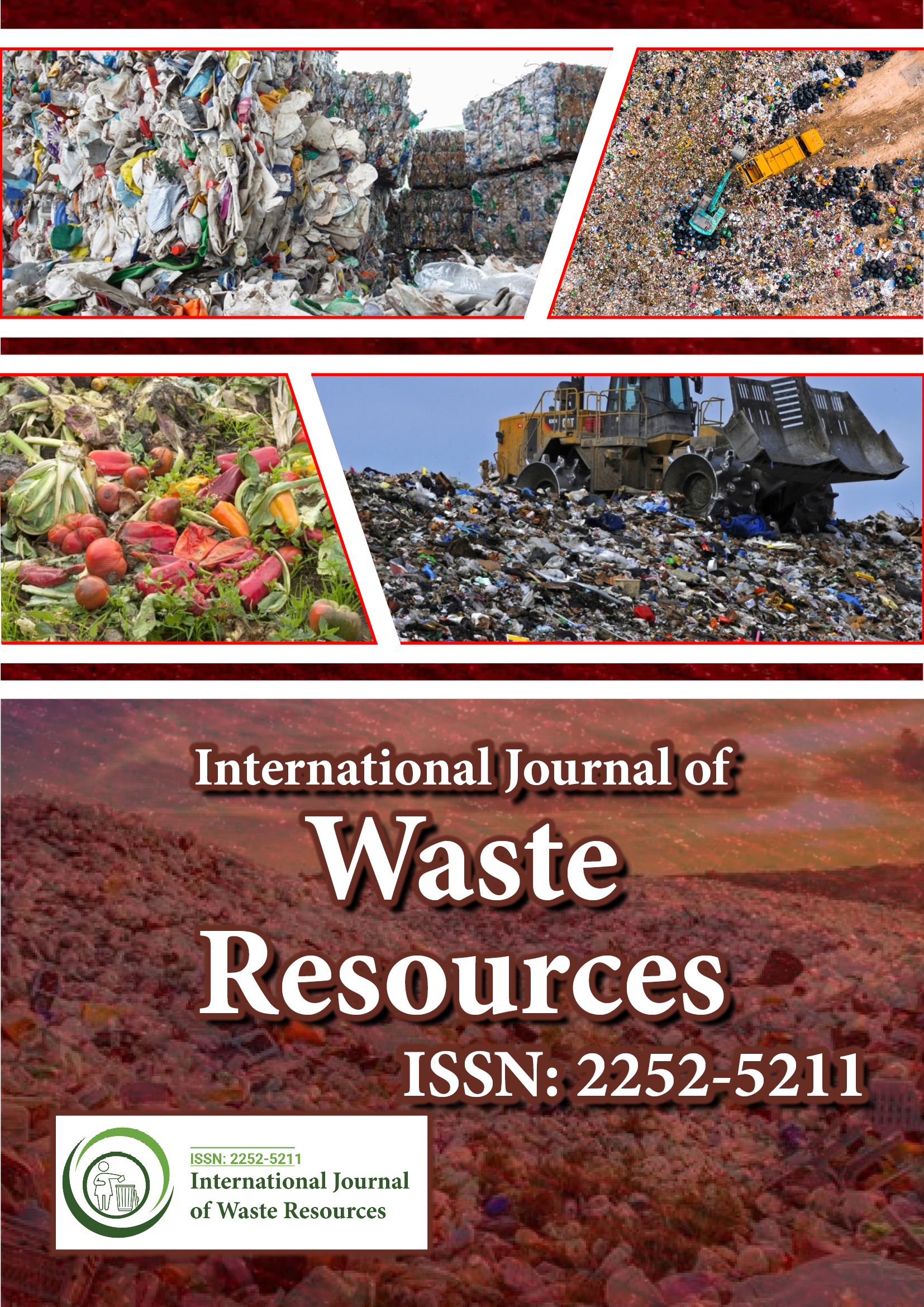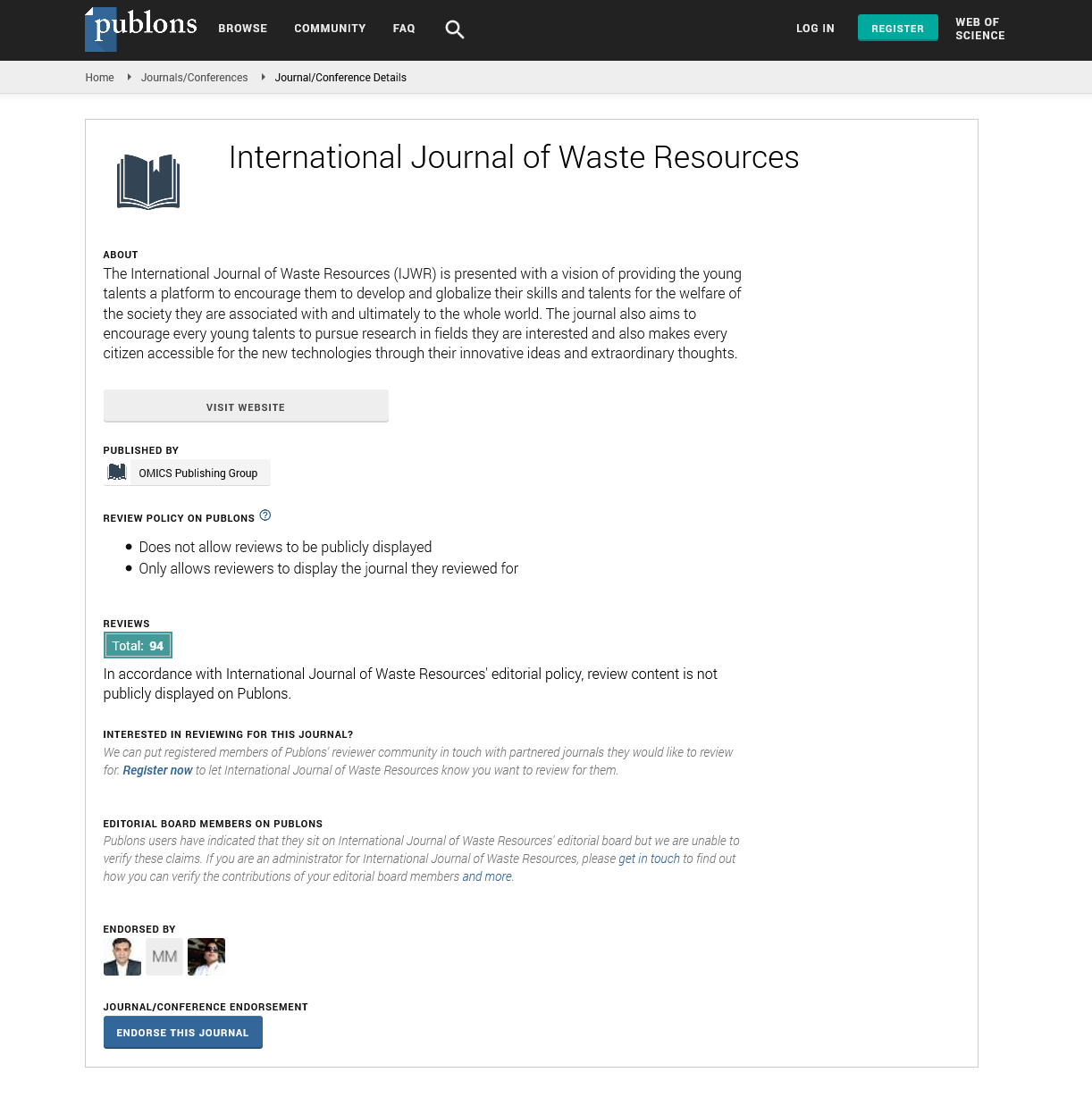Indexed In
- Open J Gate
- The Global Impact Factor (GIF)
- Open Archive Initiative
- VieSearch
- International Society of Universal Research in Sciences
- China National Knowledge Infrastructure (CNKI)
- CiteFactor
- Scimago
- Ulrich's Periodicals Directory
- Electronic Journals Library
- RefSeek
- Directory of Research Journal Indexing (DRJI)
- Hamdard University
- EBSCO A-Z
- Publons
- Google Scholar
Useful Links
Share This Page
Journal Flyer

Open Access Journals
- Agri and Aquaculture
- Biochemistry
- Bioinformatics & Systems Biology
- Business & Management
- Chemistry
- Clinical Sciences
- Engineering
- Food & Nutrition
- General Science
- Genetics & Molecular Biology
- Immunology & Microbiology
- Medical Sciences
- Neuroscience & Psychology
- Nursing & Health Care
- Pharmaceutical Sciences
Perspective - (2023) Volume 13, Issue 2
Biological Techniques Involved in Waste Treatment and Activated Sludge Process
Guang Huang*Received: 14-Feb-2023, Manuscript No. IJWR-23-20716; Editor assigned: 17-Feb-2023, Pre QC No. IJWR-23-20716(PQ); Reviewed: 08-Mar-2023, QC No. IJWR-23-20716; Revised: 15-Mar-2023, Manuscript No. IJWR-23-20716(R); Published: 22-Mar-2023, DOI: 10.35248/ 2252-5211.23.13.525
Description
Biological wastewater treatment is a technique that uses microorganisms to remove organic pollutants and nutrients from wastewater. It can be divided into aerobic and anaerobic processes, depending on the presence or absence of oxygen. Biological wastewater treatment can be further classified into biofilm-based and suspended microbial systems, such as activated sludge process, membrane bioreactors, or trickling filter process. Biological wastewater treatment has advantages such as low chemical use and high biodegradation efficiency, but also drawbacks such as slow reaction rate, large area requirement, and production of unwanted microorganisms and odors.
An example for biological wastewater treatment is the Activated Sludge Process (ASP), which is a widely used aerobic suspendedgrowth process. In ASP, microorganisms are mixed with wastewater in an aeration tank and supplied with oxygen to break down organic matter. The mixture of wastewater and microorganisms is then transferred to a clarifier, where the microorganisms settle as sludge and are recycled back to the aeration tank. The treated water is discharged or further polished. Other examples of biological wastewater treatment include rotating disc system, submerged aerated filter, sequencing batch reactor, and moving bed biofilm reactor. Some of the factors affecting biological wastewater treatment are:
• The pH is a measure of the acidity or alkalinity of the wastewater, and it affects the growth and activity of microorganisms. The optimal pH range for most biological processes is between 6.5 and 8.5. Alkalinity is a measure of the buffering capacity of the wastewater, which helps to maintain a stable pH. Alkalinity is mainly provided by bicarbonates, carbonates and hydroxides in the wastewater.
• The temperature affects the metabolic rate of microorganisms, the solubility of oxygen and other substances, and the viscosity of the wastewater. Higher temperatures generally increase the biological activity, but also decrease the oxygen solubility and increase the oxygen demand. The optimal temperature range for most biological processes is between 20°C and 35°C.
• The nutrients required for biological wastewater treatment are mainly carbon, nitrogen and phosphorus, which are used by microorganisms for growth and energy production. The ratio of Carbon to Nitrogen to Phosphorus (C:N:P) in the wastewater should be around 100:5:1 for optimal biological performance. If any of these nutrients are deficient or excessive, it may affect the microbial population and activity.
• Oxygen demand is a measure that amount of oxygen required by microorganisms to degrade organic matter in the wastewater. The oxygen demand can be expressed as Biochemical Oxygen Demand (BOD) or Chemical Oxygen Demand (COD), depending on the method of measurement. The oxygen demand affects the design and operation of biological processes, especially aerobic ones, which require a sufficient supply of dissolved oxygen to maintain microbial activity. The oxygen demand also influences the energy consumption and cost of aeration.
Human waste includes urine, feces, and grey water (from washing and bathing) that are generated from household and industrial activities. Human waste contains nitrogen and phosphorus in different forms, such as ammonia, nitrate, nitrite, organic nitrogen, phosphate, and organic phosphorus. These nutrients may not be removed effectively by conventional wastewater treatment processes and can cause eutrophication in receiving waters.
Conclusion
Household detergents are the sources of phosphorus in wastewater, as they contain phosphate compounds that enhance their cleaning performance. However, many states have banned the use of phosphate detergents to reduce phosphorus pollution. Phosphate can also be found in other household products, such as dishwashing liquids, laundry detergents, and personal care products. Industrial wastewater from various industrial sectors, such as food processing, textile, paper, chemical, and pharmaceutical industries may contain high concentrations of nutrients, such as nitrogen and phosphorus, as well as other organic and inorganic pollutants that can affect the biological wastewater treatment processes. Industrial waste may also require pre-treatment before being discharged to municipal wastewater treatment plants or directly to the environment.
Citation: Huang G (2023) Biological Techniques Involved in Waste Treatment and Activated Sludge Process. Int J Waste Resour. 13:525.
Copyright: © 2023 Huang G. This is an open-access article distributed under the terms of the Creative Commons Attribution License, which permits unrestricted use, distribution, and reproduction in any medium, provided the original author and source are credited.

